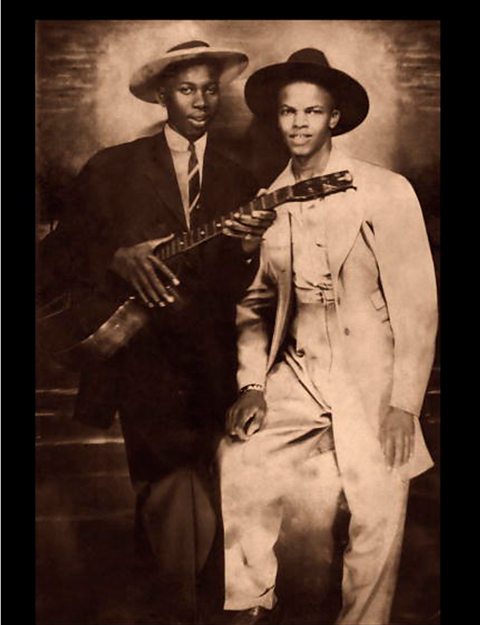The origins of the blues and the jazz movement
The birth of the blues

Although the blues evolved in the southern states of the USA from the late 19th century, it has lots of musical influences from Africa. The majority of blues musicians had descendants from Africa who were transported to America in the slave trade and were forced to work on plantation(slave trade) An estate where crops like cotton, sugar, tobacco and coffee are grown. in the South, and factories in the North.
Enslaved people would sing work songs while working the plantations and religious spirituals in church. Combined with the African rhythms, these musical styles were the foundation of blues.

The Delta blues, first recorded in the 1920s, was one of the earliest types of blues music and originated in Mississippi in the Delta. The Delta was particularly poverty stricken and the plantation owners kept their workers in harsh conditions.
Traditional songs were handed down by word of mouth and old lyrics were often adapted and turned into new ones. The guitar and harmonica were used to accompany vocals in the Delta blues as they were easy to carry around. The style is very rhythmic, has strong vocalThe voice as a musical instrument. and simple but powerful lyrics and slide guitarA guitar technique often used in blues music. A glissando effect is achieved by sliding an object across the strings. featured prominently in the music.
Blues music is characterised by sad melodies and even today the expression having the blues means you are feeling gloomy. Early blues music was very slow and emotional using simple harmonies with a vocalist accompanied by a guitar. Bessie Smith and Robert Johnson made the blues style very popular in the 1920s. By the 1940s and 50s, the style had developed further and included a range of other instruments. This style was called rhythm and blues, R'n'B musicA genre of contemporary music that fuses elements of other genres together such as blues, pop, hip-hop. , and was usually played on electric guitar and bass.
The evolution of jazz
Jazz is a fusionMusical fusion is when two different styles are brought together to create a new type of music. of African and European music and was developed in the USA in the early part of the 20th century 1901-2000. . The style started out as Dixieland jazz in New Orleans in the early 1900s. It is a mix of brass band marches, ragtime, blues and gospel.
One of the primary features of the style was that performers improvised together rather than taking solo improvisation spots, which gives a polyphonicA texture where lines of music move independently. texture. Jazz was played in bars as they were one of the few places where African American citizens were allowed to perform. Several types of jazz music developed during the 20th century but many famous jazz musicians crossed over between styles. Famous musicians to listen to are Louis Armstrong, The Charlie Parker Quintet and Thelonious Monk.
